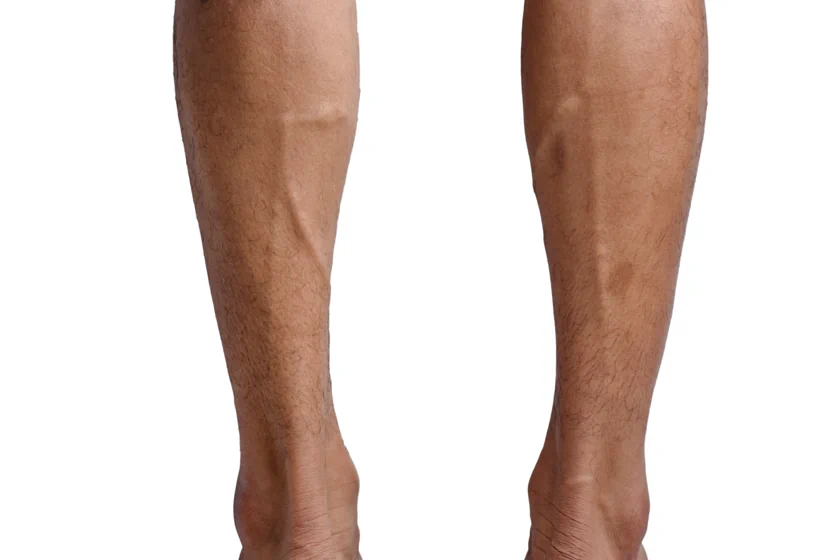
Varicose Veins and Exercise: Guide to Improved Circulation
Did you know that varicose veins affect approximately 25% of adults globally? These swollen, twisted veins not only pose cosmetic concerns but can also lead to discomfort and serious health issues if left untreated.
While genetics and lifestyle factors contribute to their development, the good news is that exercise can play a crucial role in managing varicose veins. In this comprehensive guide, we’ll delve into the impact of exercise on varicose veins, exploring the best workouts to enhance circulation and prevent their occurrence.
Before we go ahead with the varicose veins workout examples, it is my duty, as a vascular surgeon, to inform you that varicose veins workout will not help you cure varicose veins.
That being said, the right type of varicose veins workout can certainly and undoubtedly help you ease the pain and discomfort.
With that thought in mind, let us move forward with the best varicose veins workout exercises.
The Role of Exercise in Varicose Vein Management
Exercise is a powerful tool in managing varicose veins as it improves circulation, strengthens muscles, and aids in weight management. Let’s explore the best workouts to incorporate into your routine for optimal vascular health.
Aerobic Exercises
Aerobic exercises are highly effective in promoting blood flow and strengthening the cardiovascular system. Walking is one of the simplest yet most beneficial exercises for varicose veins.
Aim for brisk walking sessions for at least 30 minutes at least 5 days of the week. Swimming and cycling are also excellent choices as they are low-impact activities that engage the leg muscles without putting excessive strain on the veins.
Resistance Training
Strength training exercises help build muscle strength and support the veins, reducing the risk of venous insufficiency.
Focus on exercises that target the lower body, such as squats, lunges, and leg presses. These exercises not only strengthen the muscles but also improve circulation by facilitating blood return to the heart. For those who are unable to do squats or lunges, lying down on your back and doing leg raises and folds are also easy to perform.
Yoga and Stretching
Yoga and stretching exercises can alleviate pressure on the veins and promote blood circulation.
Poses that elevate the legs above the heart, such as Legs-Up-the-Wall pose and Corpse pose, can help reduce swelling and discomfort.
Additionally, incorporating stretching exercises for the calves, hamstrings, and thighs can improve flexibility and reduce tension in the legs.
Additional Exercises for Varicose Vein Management
While aerobic exercises, resistance training, and yoga are excellent choices for improving circulation and strengthening muscles, there are several other exercises that can specifically target varicose veins and enhance vascular health.
Pilates
Pilates focuses on core strength, flexibility, and overall body awareness. Certain Pilates exercises, such as the Hundred, Leg Circles, and Leg Circles with Hands Behind Head, can improve blood circulation in the legs and alleviate symptoms of varicose veins.
Water Aerobics
Water aerobics is a low-impact exercise performed in a pool, making it ideal for individuals with varicose veins. The water’s buoyancy reduces stress on the joints while providing resistance to strengthen muscles and improve circulation.
Tai Chi
Tai Chi is a gentle form of martial arts that involves slow, flowing movements and deep breathing. Practicing Tai Chi can improve balance, flexibility, and circulation, making it beneficial for managing varicose veins and reducing discomfort.
Calf Raises
Calf raises or ankle pumps target the calf muscles, which play a crucial role in pumping blood back to the heart. Stand with your feet hip-width apart, then slowly raise your heels off the ground, lifting onto the balls of your feet. Hold for a few seconds before lowering back down. Repeat for several repetitions to strengthen the calf muscles and improve blood flow in the legs.
Leg Elevation
Leg elevation is a simple yet effective exercise to reduce swelling and alleviate discomfort associated with varicose veins. Lie down on your back and elevate your legs above heart level by propping them up on pillows or a bolster. Hold this position for 10-15 minutes to allow gravity to help drain excess fluid from the legs.
Ankle Flexion and Extension
Ankle flexion and extension exercises help improve circulation by engaging the muscles in the feet and ankles. Sit on a chair with your feet flat on the ground. Slowly flex your ankles, pointing your toes towards the ceiling, then flex them back towards your shins. Repeat this motion for several repetitions to promote blood flow in the lower legs.
Leg Swings
Leg swings help improve circulation and flexibility in the hips, thighs, and calves. Stand next to a wall or sturdy object for support, then swing one leg forward and backward in a controlled motion. Repeat on the other leg, aiming for 10-15 swings on each side.
Bicycle Legs
Bicycle legs mimic the motion of pedaling a bicycle and are effective in improving circulation in the legs. Lie on your back with your legs extended upward. Perform a cycling motion with your legs, alternating between bringing one knee towards your chest while extending the other leg outward. Continue cycling for several repetitions.
Additional Tips for Varicose Vein Management
In addition to regular exercise, there are several lifestyle modifications you can make to manage varicose veins effectively:
1. Elevate your legs: Spend time with your legs elevated above heart level to promote blood flow back to the heart.
2. Wear compression stockings: Compression stockings help improve circulation and reduce swelling in the legs.
3. Avoid prolonged sitting or standing: Take regular breaks to move around and avoid staying in one position for extended periods.
4. Maintain a healthy weight: Excess weight puts added pressure on the veins, exacerbating varicose vein symptoms.
5. Stay hydrated: Drinking plenty of water helps maintain blood volume and promotes circulation throughout the body.
FAQs about Varicose Veins Workout
No, moderate exercise is beneficial for varicose veins as it promotes better circulation and strengthens surrounding muscles. However, high-impact activities that put excessive strain on the veins should be avoided. It is also beneficial to wear compression stockings while walking or doing aerobic exercises.
Aim for at least 30 minutes of moderate-intensity exercise for 5 days of the week. Consistency is key to reaping the benefits of exercise for varicose vein management.
While any form of exercise that promotes circulation and muscle strength is beneficial, gym workouts like elliptical training, stationary biking, and leg presses can be particularly helpful for varicose veins.
Yes, maintaining a healthy weight through regular exercise and a balanced diet can reduce the pressure on the veins and alleviate symptoms associated with varicose veins.
Yes, in most cases, exercise is safe and recommended for individuals with varicose veins. However, it’s essential to consult with a healthcare professional before starting any new exercise regimen, especially if you have underlying health conditions.
Conclusion
Exercise plays a crucial role in managing varicose veins by improving circulation, strengthening muscles, and promoting overall vascular health.
By incorporating a combination of aerobic workouts, resistance training, and stretching exercises into your routine, you can reduce the risk of varicose vein complications and alleviate symptoms.
Remember, if you experience persistent symptoms or require medical assistance, don’t hesitate to connect with Dr. Sumit Kapadia, the leading vascular surgeon in Vadodara, for expert guidance and treatment options.

MBBS, MS, MRCS, DNB-Fellow
Dr. Sumit Kapadia
Dr. Sumit Kapadia / MR KAPADIA SUMIT a gold-medalist from Baroda Medical College, obtained his general surgical training and senior residency from SSG Hospital, Vadodara.

MBBS, MS, MRCS, DNB-Fellow
Dr. Sumit Kapadia
Dr. Sumit Kapadia / MR KAPADIA SUMIT a gold-medalist from Baroda Medical College, obtained his general surgical training and senior residency from SSG Hospital, Vadodara.



